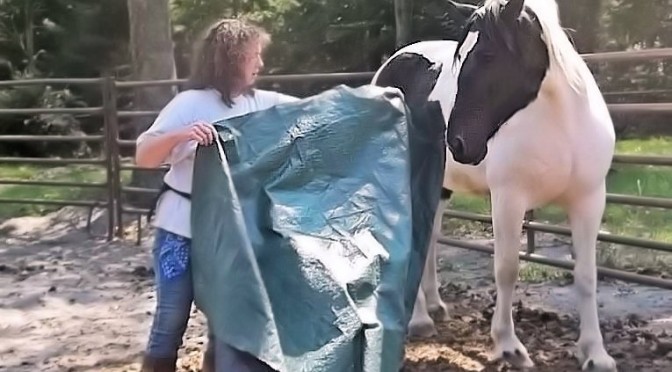I’ve recently been involved in a discussion about using the clicker appropriately. (Due to the viewing of the last post’s video) … Now if you know me then you know that I don’t always ‘follow the rules” and I’m not a purist of any sort when it comes to teaching horses. I utilize what I find to work the best way without causing stress to the horse! Clicker Training is just one of the ways I work with horses but, again, I am, in no way, a purist.
The question came up from another horsewoman about dopamine and how it works in Clicker Training and why the ‘click’, for a well-clicker-seasoned horse, can be MORE of a ‘reward’ than a food treat … (that doesn’t mean that we don’t treat, too — it just means that one needs to be aware and sensitive to what is going to best reward that individual horse at that individual moment in time of teaching)
Here, in a nutshell, is a great explanation …
“Dopamine and the the Endorphins tend to be found in different areas of the brain, and tend to be associated with different behaviors and functions. The common conception of Dopamine and the Endorphins as ‘feel good’ chemicals is really more wrong than it is right. Simply (but inaccurately) put: dopamine tends to be involved in reinforcing behavior. So if you do something that your brain is programmed to ‘like’ like drink some soda in a specific place repeatedly you may get a small release of dopamine when you are near that place. This is not going to be something that you are going to feel but rather a signal that is going to subtly influence your behavior in the future, like perhaps cause you to spend more time in that place and buy a soda when you are there. But in reality the way these chemicals work is WAY more nuanced and subtle than this and I only partially understand these things” — Sam Moss, B.A. Neuroscience
AND MORE: “Dopamine is sent to balance excitement. It sometimes acts as a neurohormone; a hormone that’s produced by nerve cells and secreted into the circulation. It’s main function is to activate pleasure and reward, movements, sleep, mood fixation, memory improvement, attention, regulation of prolactin secretion, etc.
On the other hand endorphins are sent due to stimuli; pain and stress. Its functions are mainly pain management. Endorphins are quite similar to morphine, and affects the reward system. How to they control pain? Because of their bindings with opioid receptors, endorphins reduce pain by restraining the synthesis of proteins involved in pain transmission.” –Natalie Jakarian

